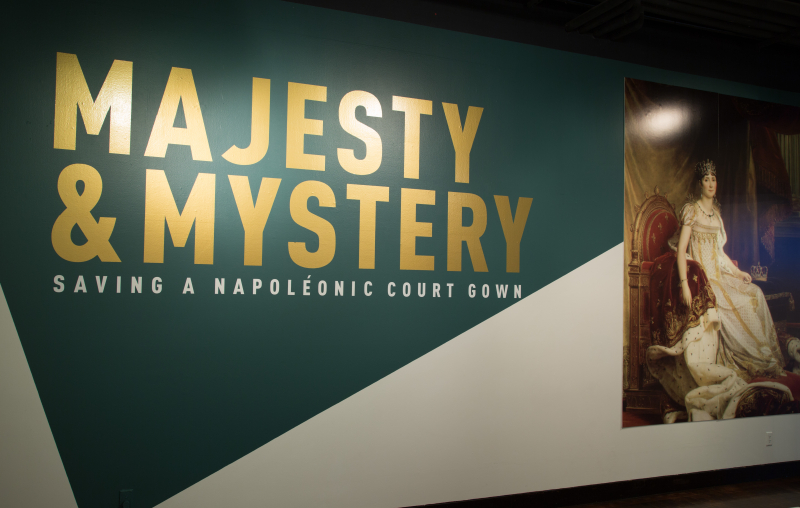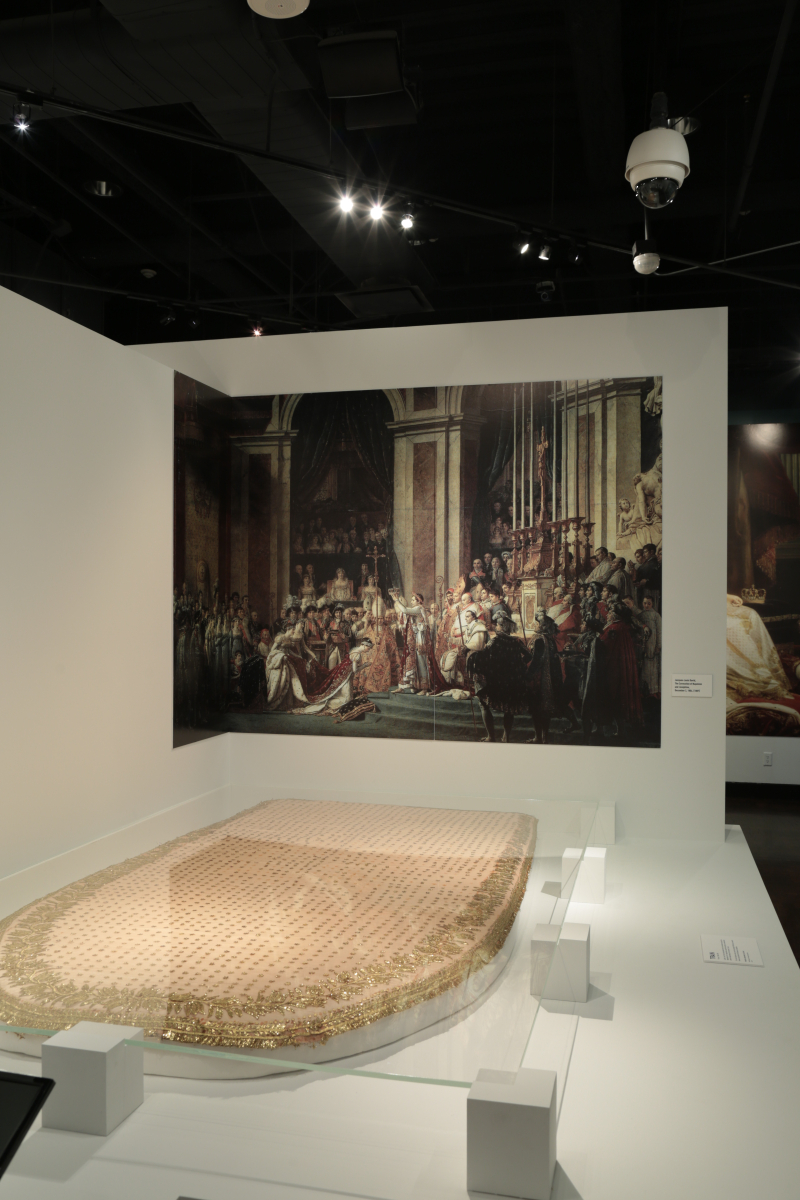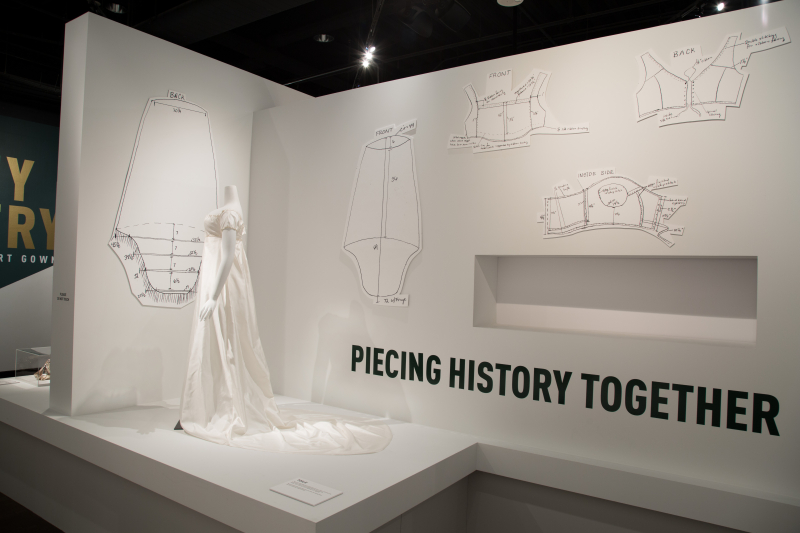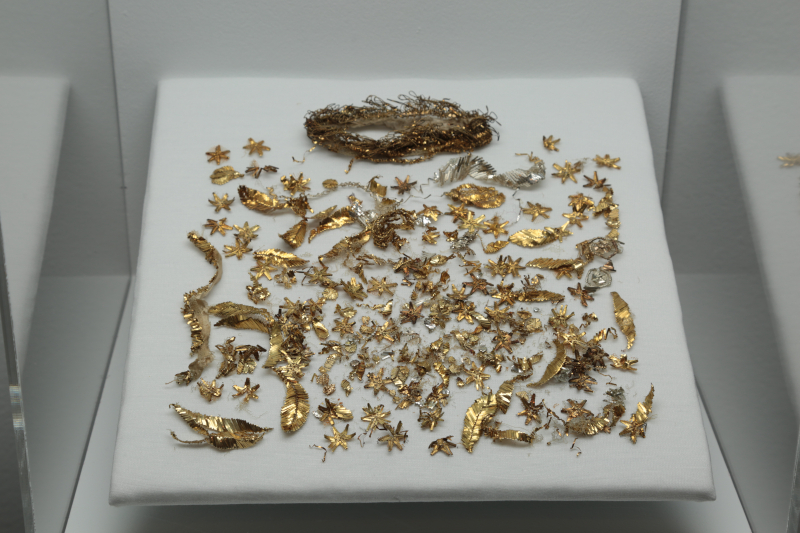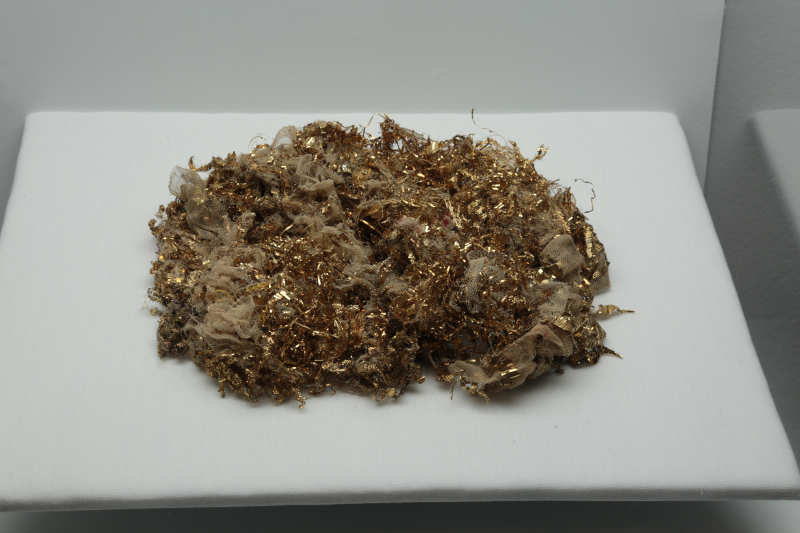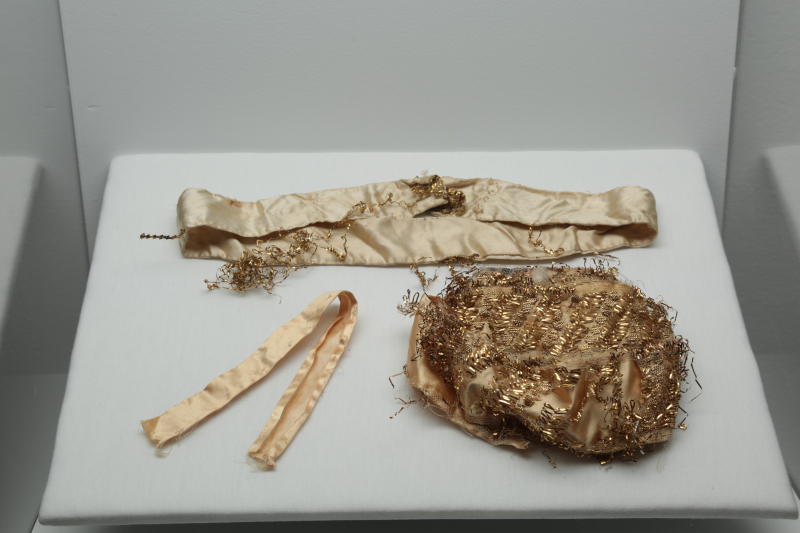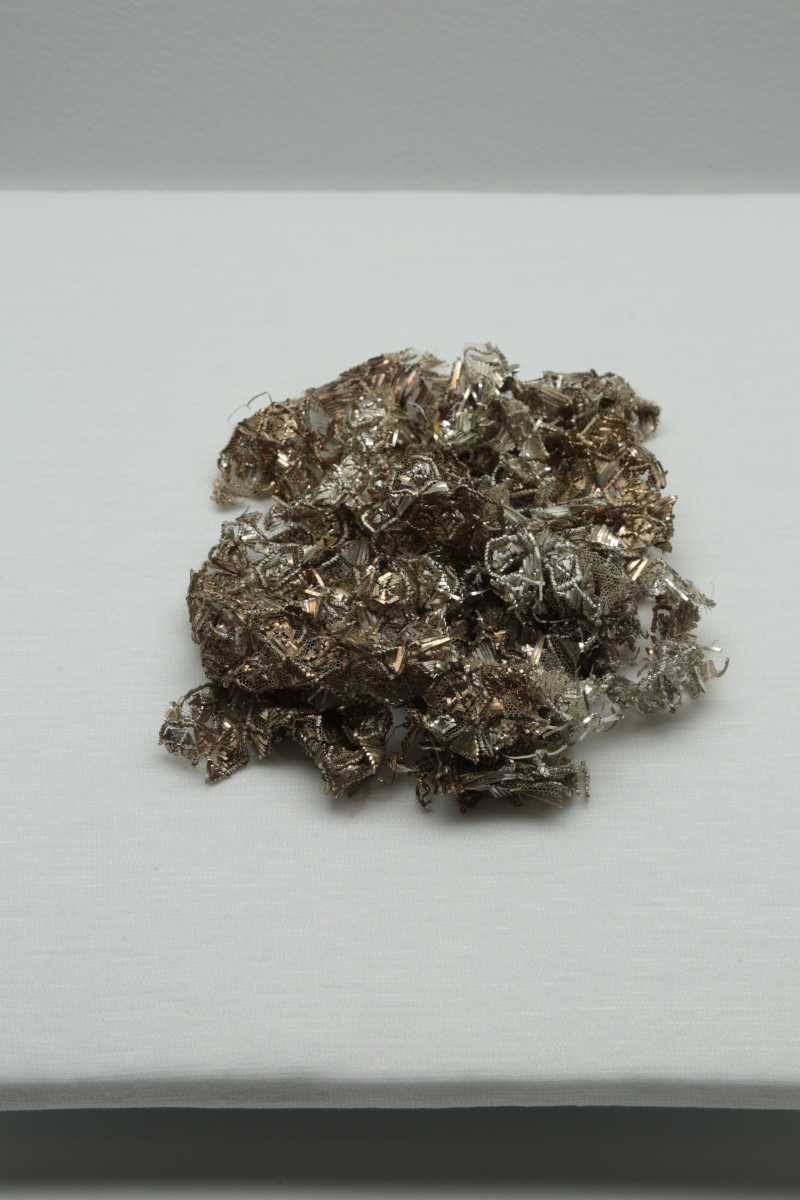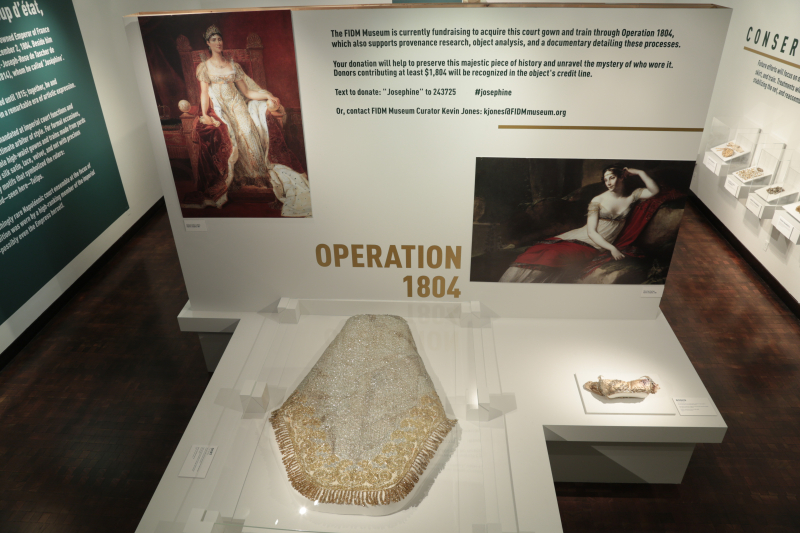Majesty & Mystery
The FIDM Museum History Gallery is a treasured part of our institution. It gives us the ability to showcase our vast Permanent Collection, or, in the case of the History Gallery’s current exhibition, an object that we hope to acquire! In the coming months, we are thrilled to take you behind-the-scenes of Majesty & Mystery: Saving a Napoléonic Court Gown. This unique exhibition introduces the Museum’s newest proposed acquisition: an extremely rare c. 1804 court gown possibly worn by Empress Joséphine, wife of Napoléon Bonaparte. As visitors explore the gallery, we share the historical importance of this gown, our research to confirm its provenance, plans for future conservation, and our fundraising efforts to make the gown part of our Permanent Collection. For those readers who are not local to Los Angeles, join us today for a virtual walk-through of the exhibition.
After a distinguished military career and surprising coup d’état, Napoléon Bonaparte (1769-1821) was crowned Emperor of France in Notre Dame Cathedral, Paris, on December 2, 1804. Beside him at the coronation was his wife Marie -Joseph-Rose de Tascher de la Pagerie de Beauharnais (1763-1814), whom he called ‘Joséphine’. Emperor Napoléon’s reign lasted until 1815; together, he and Empress Joséphine ushered in a remarkable era of artistic expression. A strict dress code was mandated at imperial court functions and the Empress was the ultimate arbiter of style. For formal occasions, ladies wore fashionable high-waist gowns and trains made from yards of French-produced silk satin, lace, velvet, and net with precious metal embroidery motifs that symbolized the rulers: Bees, Roses, and—seen here—Tulips. The astonishingly rare Napoleonic court ensemble at the focus of this exhibition was worn by a high-ranking member of the imperial circle—possibly even the Empress herself.
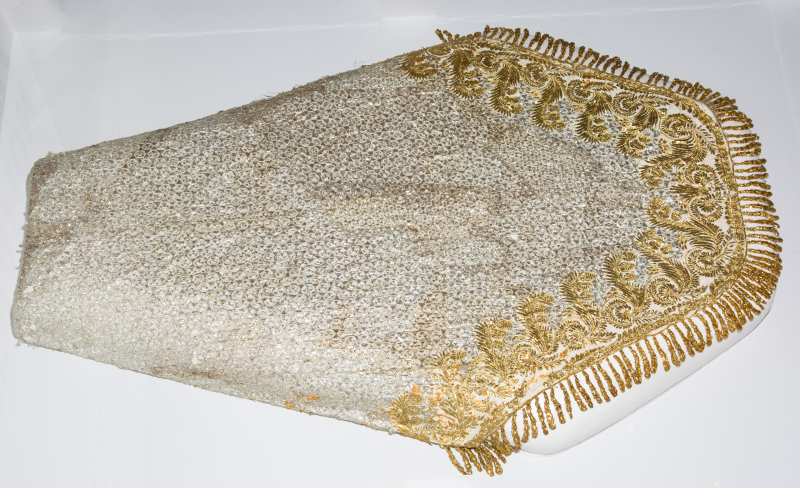 Skirt France, 1804-1809 Metallic embroidery & silk net FIDM Museum Proposed Acquisition, L2017.9.1
Skirt France, 1804-1809 Metallic embroidery & silk net FIDM Museum Proposed Acquisition, L2017.9.1
The court ensemble is said to have been made for Empress Joséphine by her court dressmaker Louis Hippolyte LeRoy, who worked with designer Jean-Baptiste Isabey. It descended in a British family which stated a relative purchased it after Napoléon complained of its exorbitant cost and refused to pay the bill. The skirt is made of silk net embroidered with gold and silver in geometric and stylized floral patterns. Sheets of metal were pounded and sliced to create thin strips, which were passed through the net yardage while stretched across a frame.
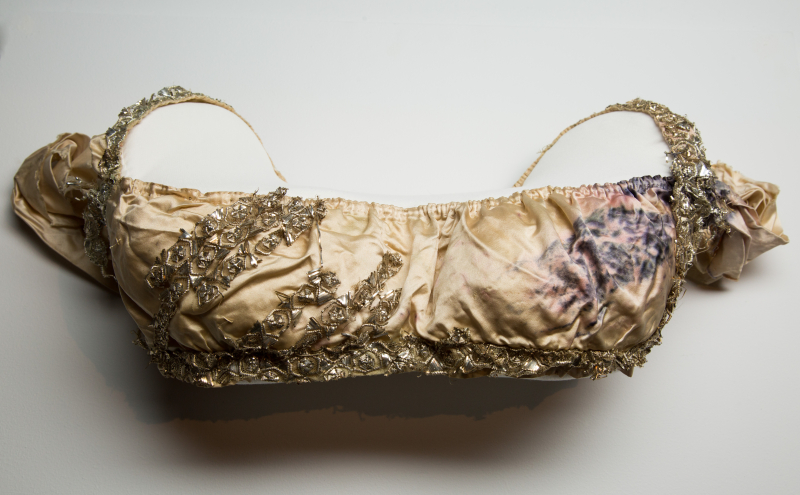 Bodice France, 1804-1809 Metallic embroidery & silk net FIDM Museum Proposed Acquisition, L2017.9.1
Bodice France, 1804-1809 Metallic embroidery & silk net FIDM Museum Proposed Acquisition, L2017.9.1
The extremely short cut of this bodice confirms it was made in the first decade of the nineteenth century. Embroidery fragments suggest the spiraled silk sleeves probably had additional net over-sleeves. The dark staining on the proper left side of the bodice indicates that the area once had metallic embroidery.
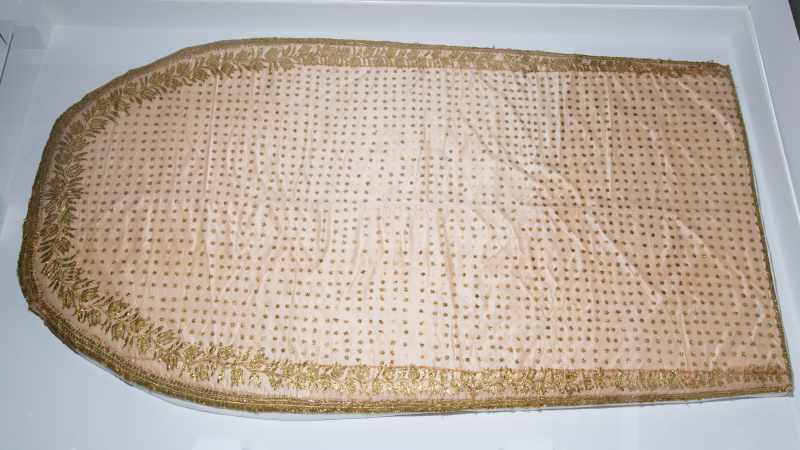 Train France, 1804-1809 Metallic embroidery & silk net FIDM Museum Proposed Acquisition, L2017.9.1
Train France, 1804-1809 Metallic embroidery & silk net FIDM Museum Proposed Acquisition, L2017.9.1
Ladies’ court trains descended from the shoulders during the Napoléonic era. Regulations specified length and embroidery patterns depending on the wearer’s rank. This train features stars and tulip-shaped fritillaries, an exotic flower associated with Empress Joséphine. A dense border of hanging tassels was de rigueur along the hem of court ensembles. It is similar in design to the hanging fringe attached to military epaulets and likely references Napoleon’s imperial prowess in battle.
The court ensemble was recently patterned to create a muslin toile (shown above), the preliminary step in understanding how the now separate bodice, skirt, and train were originally worn together. Measurements taken will determine the size, narrowing down the list of potential original owners. Future efforts will focus on obtaining funds for in-depth object analysis and conservation of the bodice, skirt, and train. Treatments will include reassembling embroidery fragments, removing the later train lining, net stabilization, and reassembling the ensemble as originally worn.
Sleeve & Train Fragments A circular sleeve fragment ornamented with gilt fringe is probably part of the bodice’s original net over sleeve.
Train Fragments Napoleonic court trains were suspended at the upper back. The heavy weight was supported by shoulder straps (one seen here) and a belt. The detached padded train hem—now in several rolls—will be reattached. The ensemble was likely worn as fancy dress in the 19th and 20th century, when damaged embroidery was removed and a new lining was affixed to the train.
These embroidery elements have become separated from the gown. They will be untangled and laid flat to determine their original location— probably the bodice. The FIDM Museum is currently fundraising to acquire this court gown and train through Operation 1804, which also supports provenance research, object analysis, and a documentary detailing these processes. By donating denominations between $18.04 and $1,804—or even $18,040!—you will help to preserve this majestic piece of history and unravel the mystery of who wore it. Text ‘Josephine’ to 243725 to donate today! Or, contact FIDM Museum Curator Kevin Jones: [email protected]
